The grindability of hand-brewed coffee refers to the debugging mode of the grindness of the coffee machine.
Professional coffee knowledge exchange more coffee bean information please follow the coffee workshop (Wechat official account cafe_style)
No matter what kind of coffee extraction method, you need to go through the grinding process, and different extraction methods use different grinding thickness. The most obvious manifestation is that the coffee powder used in Italian coffee machine is quite different from that used in hand-brewing form. So how do we tell which form of coffee requires which degree of grinding?
The degree of grinding theory used in the front street
No grinding machine can achieve absolute uniform grinding, that is to say, coarse powder, fine powder or even very fine powder will appear in a grinding. And this is hard to tell with the naked eye. Therefore, the front street will use a screen to assist in determining the degree of grinding.
In forms such as hand punching, Qianjie will be calibrated with the help of the GB 20 standard screen, which has an aperture of 0.85mm, which means that coffee particles larger than 0.85mm cannot pass through.
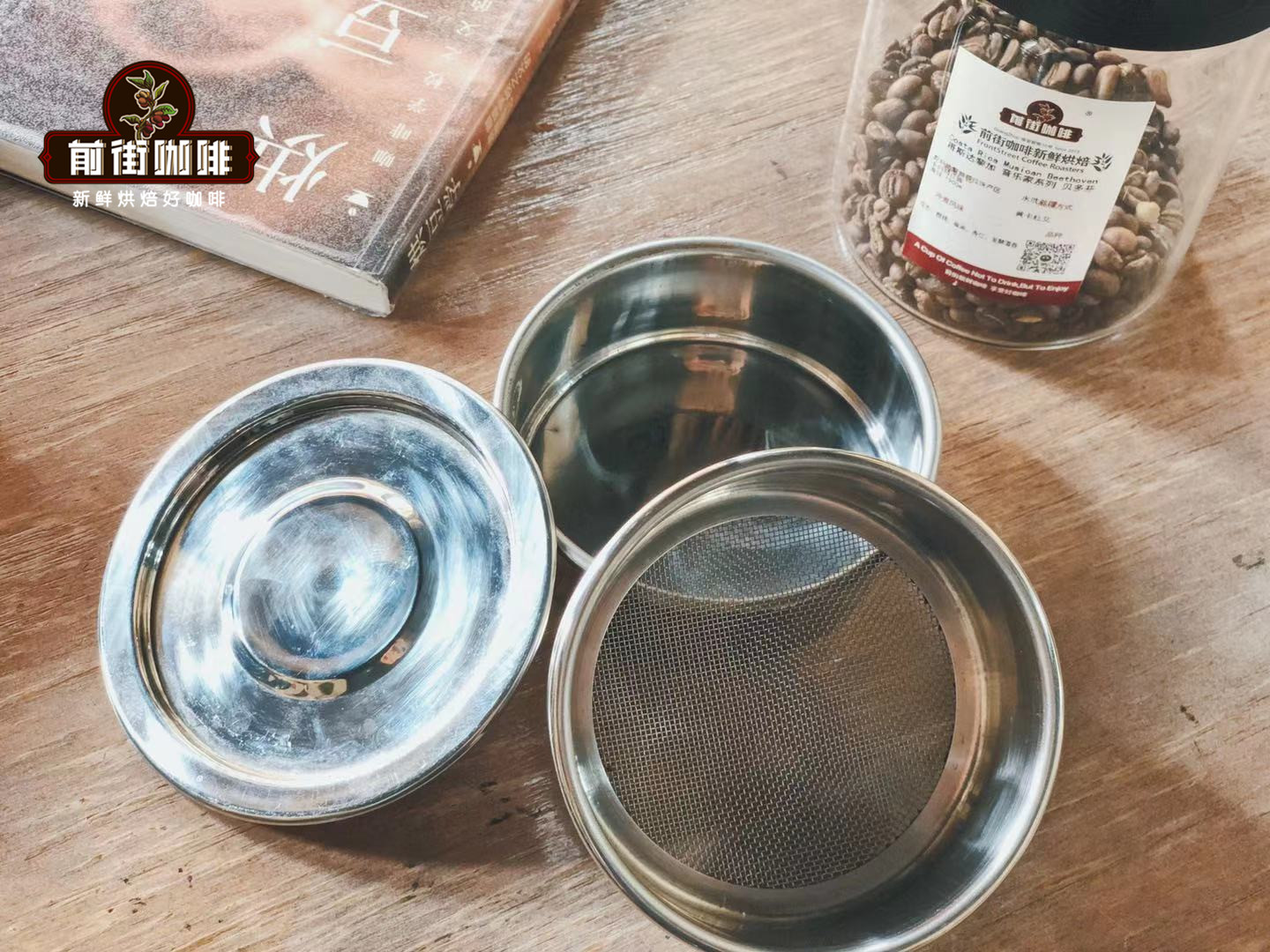
Qianjie coffee grindability standard sieve pass rate:
Ice drop > hand race wind 80% > American drip 75-80% > cup test 70-75% > normal pressure 65-70%.
The value of the required degree of grinding can be shown more intuitively in this way. Among them, the grinding degree used in making light roasted coffee in Qianjie is 80% through the No. 20 sieve. On the other hand, the degree of grinding used in brewing medium and deep-roasted coffee is 65% and 70%.
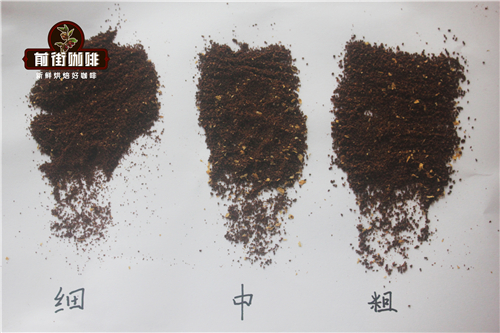
So how to debug the grinder?
Flat cutter head
The flat knife bean grinder is composed of two upper and lower cutter heads, and the base is fixed on the motor. When the motor starts, it rotates the upper and lower cutter heads to produce cutting action.
When the coffee particles fall from the middle, the knife head rotating at the bottom will spin the coffee beans to the outside and push the coffee beans into the tooth cutter part for grinding.
The upper and lower cutters of the flat knife are placed in a parallel manner, so the coffee beans need to rely on the rotating force of the bottom cutterhead to push the coffee beans into the cutterhead, so the weight of the coffee beans placed on the top will affect the uniformity of the coffee beans entering the knife cutter. in addition, due to pushing, the number of collisions between coffee beans increases, resulting in an increase in the proportion of fine powder. This is the reason why the particle uniformity of the common flat knife bean grinder is slightly worse and the fine powder is more.
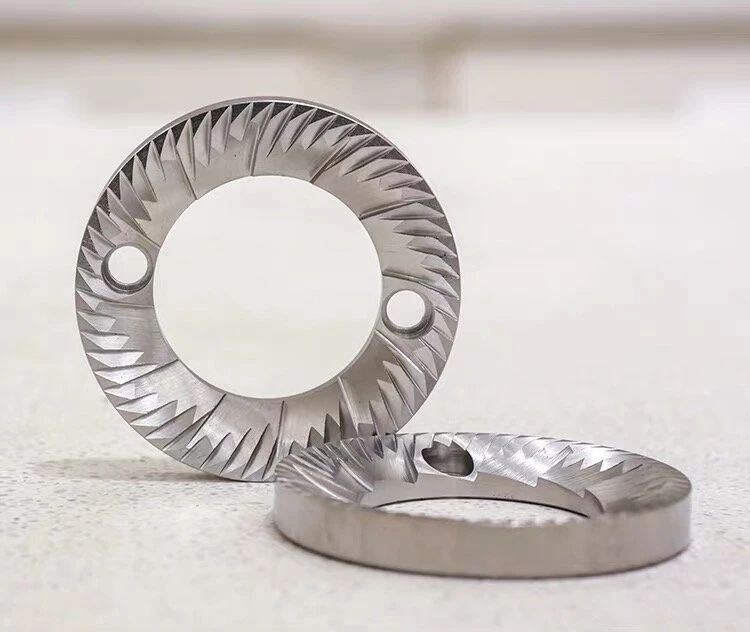
The coffee particles ground by flat knife are flaky, and the flake can increase the area of cell wall, so using flat knife can increase the concentration and extraction rate of coffee liquid in a short time, so that the aroma of coffee can be significantly improved in a short time. At the same time, because the shape is long and the volume is smaller, when the extraction time becomes longer, the granular xylem will absorb too much water, resulting in increased miscellaneous flavor and astringent taste.
Cone cutter head
The conical knife grinder places a conical cutter head at the bottom, and then grinds it with the outer ring cutter head. After the coffee bean falls from above, it will pull the coffee bean down with the rotation of the conical cutter head, and then produce grinding action. Because of the relationship from top to bottom, the particles can push the coffee out without pushing. Compared with the peace knife grinder, the number of collisions between the particles will be reduced a lot. Therefore, the proportion of fine powder produced by the cone knife will be much less than that of the flat knife, and the uniformity of coffee grinding will be greatly improved.
The cone knife grinding particles will be nearly granular, resulting in a longer water absorption path of coffee particles, and it will take longer for the interior to come into contact with water, so the cone knife particles will release less soluble matter at the initial stage, resulting in a low concentration in a short period of time. At the same time, because the shape is granular, even if extracted for a longer time, the xylem absorbs less water and is less likely to produce miscellaneous and astringent taste.
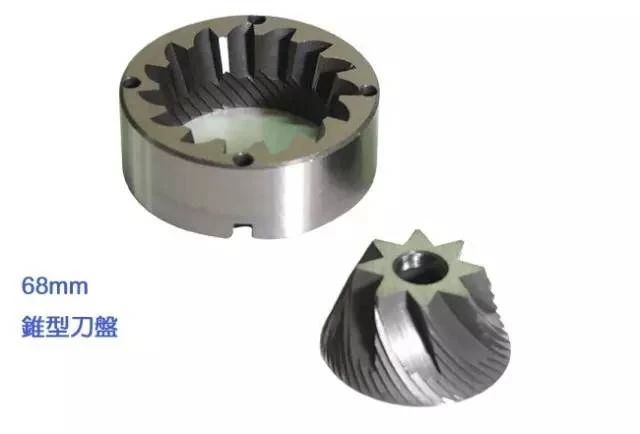
Ghost tooth cutter head
The ghost tooth grinds the coffee bean into particles by grinding, so its shape is mainly close to the sphere. But also because a coffee bean can be ground into several small particle spheres, then the grinding sphere will produce more leftovers (fine powder). But the overall difference between large particles is the smallest. It is suitable for hand grinding.
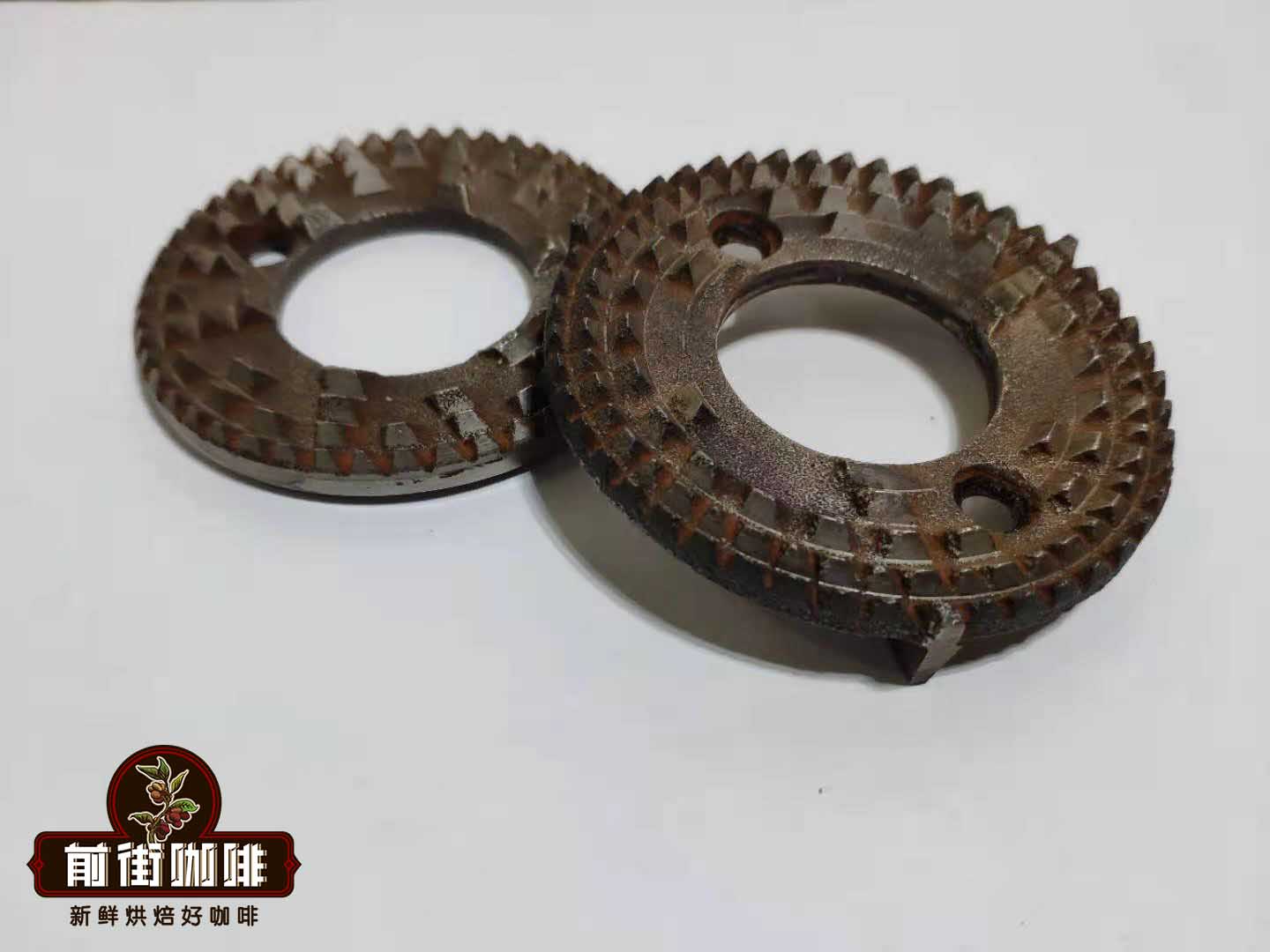
For a new grinder or a grinder that is disassembled, cleaned and reassembled, the relationship between the grinding degree and the scale is not fixed. For example, the bean grinder Forte-BG, which is usually used in Qianjie, has a 6S scale of 80% pass rate of No. 20 standard screen before cleaning. When the 6S scale is assembled and debugged after cleaning, the pass rate of the standard sieve No. 20 is 75%. Therefore, whether it is a new machine or an old machine, it has to be debugged and calibrated every once in a while.
New machine grinding
Qianjie uses a brand grinder for demonstration. The grinder has 10 gears, which means there are 10 grinding scales to choose from. First of all, select a finer gear and a thicker gear for interval investigation.
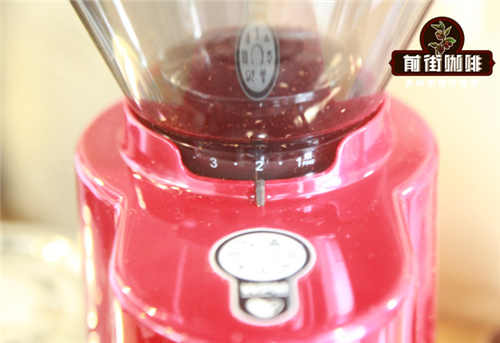
First of all, two scales are selected for grinding and debugging.
All 10 grams of powder passed, with a pass rate of 100%. It feels like flour and looks a lot like spaghetti. Someone may have asked, why not use a degree of grinding of 1? Because the obvious sound of the collision of the cutter head can be heard when it is twisted to 1, and it has been completely tightened, so the editor chose the grinding degree of 2 to test it.
The next step is the 10:10 gram powder passing 2.8g, with a pass rate of 28%.
Therefore, the wide range of the bean grinder is very wide, if the wide range is wider, the less the scale between them, then the less grinding degree to choose from (the lower the precision).
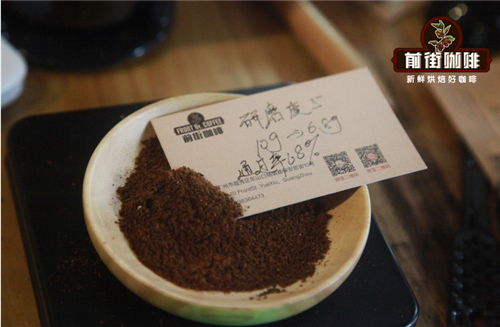
Then we choose the middle scale 5 for debugging: 10 grams of powder passes 6.8 grams, and the pass rate is 68%.
This is quite close to 80% of the grinding degree we use, so scale 4 is used for debugging. 10 grams of powder passes 7.8 grams, and the pass rate is 78 percent. Because the Ada grinding gap between each scale is a little large, scale 4 is the closest to the grinding degree we need, so scale 4 can be regarded as the grinding degree of hand-punched products.
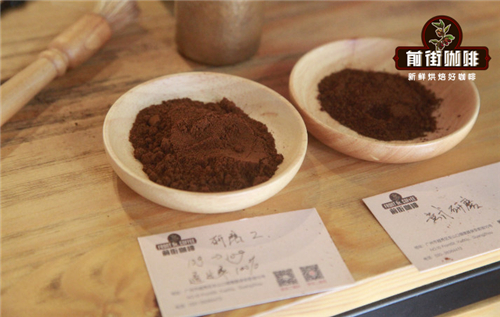
Generally speaking, when we adjust the grinding degree of the bean grinder, we first look at the pass rate of the finest grinding and the thickest grinding screen, and then take a middle value to fine-tune it. If there is no screen at home, then it can only be adjusted through the most intuitive way-tasting the flavor of brewed coffee!
For more boutique coffee beans, please add private Qianjie coffee on Wechat. WeChat account: kaixinguoguo0925
Important Notice :
前街咖啡 FrontStreet Coffee has moved to new addredd:
FrontStreet Coffee Address: 315,Donghua East Road,GuangZhou
Tel:020 38364473
- Prev

The difference between HARIO coffee filter paper 01 and 02-how to fold coffee filter paper
The difference between HARIO Coffee filter Paper 01 and 02-how to fold Coffee filter Paper step 1: CHEMEX coffee pot, single hole filter paper, hand brewer, coffee beans, grinder coffee cup, flower jar. Step 2: install the filter paper and wet it with hot water to remove the odor and warm the kettle. Step 3: adjust the bean grinder and choose the appropriate medium and coarse grinding scale according to the water temperature and bean properties.
- Next

The difference between flat teeth and ghost teeth of coffee grinder-which is better than hand coffee grinder
Coffee grinder flat tooth and ghost tooth difference-hand coffee bean grinder which kind of good Italian bean grinder is divided into cone knife and flat knife. The cone knife type bean grinder is longitudinal grinding from top to bottom, and its path is longer. its advantage is that it can use lower rotational speed to achieve a better grinding effect, and produces less heat energy, it can retain more aroma of coffee powder, and the thickness of demons is more uniform, so that the flavor is presented.
Related
- What is the Philharmonic pressure? How to use Philharmonic pressure to make delicious coffee
- Why does a hand grinder have more fine powder than an electric grinder?
- In addition to the hot mom, what is the difference between the versions of EK43 | ditting and Mahdi ek43?
- What kind of equipment do you need to make coffee by hand? Introduction to novice starter cooking equipment tools
- Espresso needs to be ground how thick and thin scale entry Italian Coffee Machine Bean Grinder investigation and Grinding course
- How much does it cost to open a small private cafe? How much does it cost to learn coffee? How to operate it?
- The difference between the flavor characteristics of hand-brewed coffee and coffee maker is hand-brewed coffee really better than coffee maker? Can I use a coffee machine to make coffee beans by hand?
- The difference between 01 and 02 of hario v60 filter cup what is the difference between 01 and 02 filter cup opening and cooking flavor
- What's the difference between the smart cup and the French kettle? Which is better, the French kettle or the Smart Cup?
- What's the difference between a smart cup and a V60 filter cup? The difference between the taste of smart cup and hand-brewed coffee

